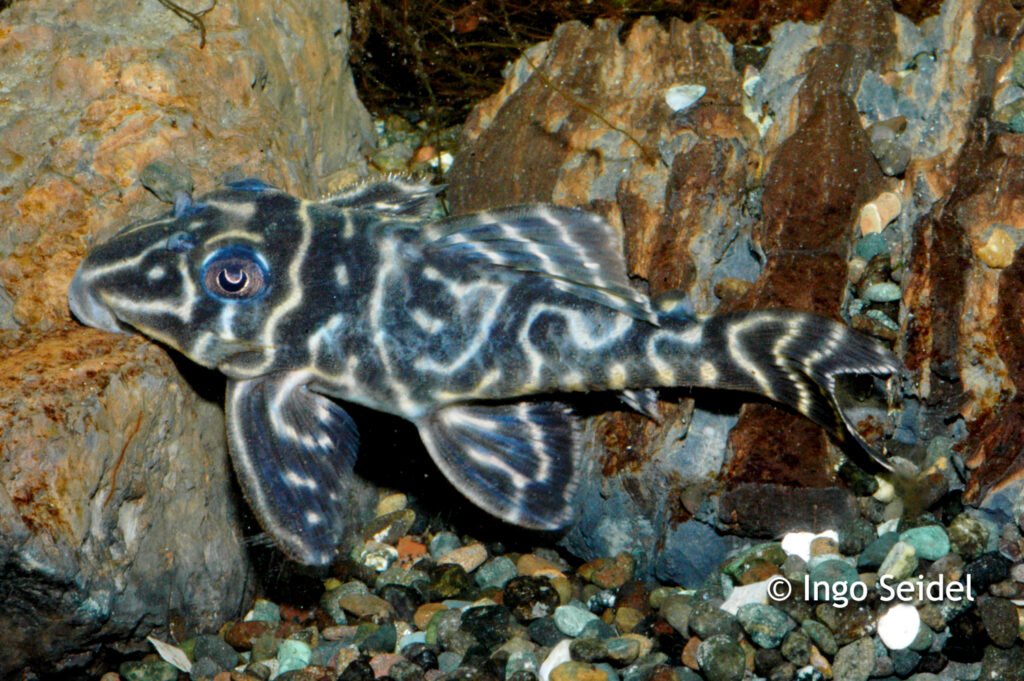



Hypancistrus debilittera is represented by a few very similar forms from nearby rivers in Colombia and Venezuela, namely L129, L340, L454 and L474. There are even some without L-number yet, and the variations are minimal but still detectable. L454 is the only form of this species (or species-group) known from black water, as it was discovered in Rio Atabapo by German Michael Böttner in 2007. He went further upstream than what ornamental fishermen usually do, to an area with waterfalls. This is where L454 was found. It was brought to Germany, where Ingo Seidel has been laying the foundation for the presence of L454 in the hobby by his continuous breeding of this species. It still remains very rare, as no new exports from Colombia have entered the trade.
Facts:
Name: Hypancistrus cf. debilittera
Trade names: L454, Hypancistrus sp. «Atabapo»
Origin: Rio Atabapo, Colombia/Venezuela border
Maximum size: 14 cm / 6”
The members of the Hypancistrus debilittera group can be told apart by the number of teeth and their maximum adult size, which are useful traits if one doesn’t know the origin of the fish at hand. Compared to the other forms, L454 is the biggest (13-14 cm, vs 10-11 cm for L129/L474 and 8-9 cm for L340 and L474) and has a different number of teeth in the upper (6-9, vs 9-11 for L129/L474 and 5-6 for L340) and lower jaw (4-6, vs 7-9 for L129/L474 and 2-6 in L340). L454 also has bigger eyes than the others.
All these forms probably belong to the same species, H.debilittera. They are different populations, separated by natural borders which the populations don’t cross. Over time they have developed certain traits to adapt to their habitat, which explain the differences in teeth, pattern, eyes and maximum size. As responsible fishkeepers we should aim to keep these forms separated in our aquariums to avoid crossbreeding
They need an aquarium set up consisting of lots of hiding places in the form of rocks, wood and of course specially made caves that suit their measurements. In these the males will eventually guard their offspring. They prefer water that is warm (26-30 C), soft and slightly acidic. Most of all it should be well oxygenated and clean, so a good filtration system and frequent water changes are essential. Among themselves they are peaceful, although males may quarrel for caves and females can sometimes be badly injured or even killed during the breeding-trapping in the male’s cave. Males develop longer odontodes on their pectoral fins and on their cheeks and have broader heads. Hypancistrus are mostly carnivorous, so a selection of crustaceans, insect larvae and fish meat should be offered along with high quality dried foods that also contain some vegetable matter.
More info:
